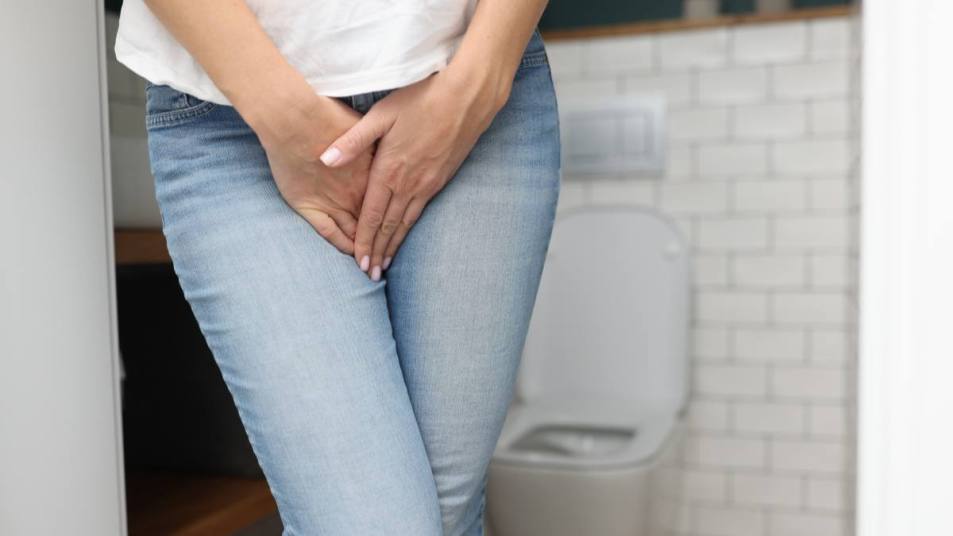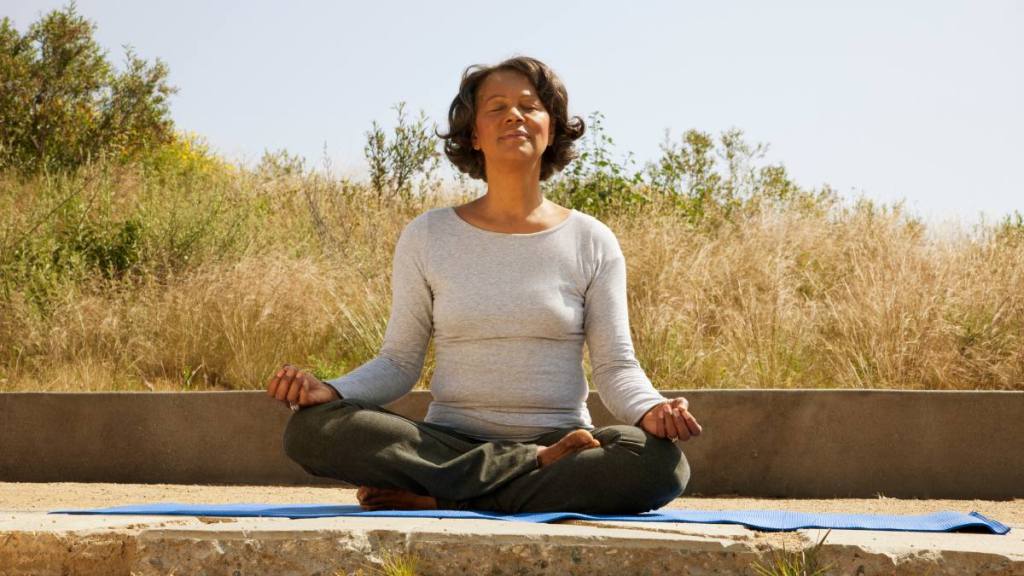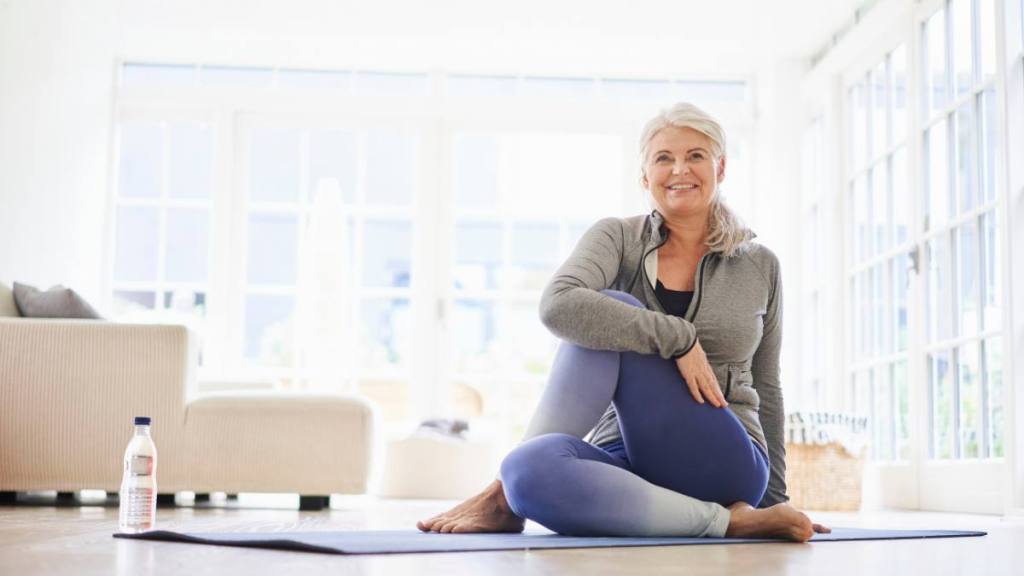Found: 3 Quick Fixes For “Gotta Go”
Women over 50 are at increased risk of urinary urgency and frequency. But identifying the unexpected triggers and the simple fixes can help calm your bladder—and eliminate bathroom emergencies

The story is played out by women every day: One second, you’re waiting in line for your morning cup of coffee, or checking out the selection of fresh berries at the supermarket, or in the middle of any other regular daily activity; the next, you’re scrambling to find the nearest bathroom — and praying you make it there in time.
It might help to know that you’re not alone in this. Findings from the National Poll on Healthy Aging, conducted by the University of Michigan Institute for Healthcare Policy and Innovation, found that up to 51% of older women struggle with the frequent urination.
Why is this “gotta go right now” urinary urgency and frequency so common among women over 50? “Many [factors] are related to changes in the female reproductive and hormonal systems as well as the aging process,” says urologist Jason Kim, M.D., director of the Women’s Pelvic Health and Continence Center at Stony Brook University Medical Center in New York.
While many women think there’s nothing they can do to put an end to this often-embarrassing problem, it’s actually easy to address some of the most common causes. Here, three surprising fixes for frequent urination problems so you can avoid future produce-aisle emergencies.
1. An easy yoga pose: Frequent urination fixes

Constipation can trigger urinary urgency, says gynecologist Sara Szal Gottfried, M.D., a Harvard-trained women’s health expert and author of several books, including The Autoimmune Cure. The reason? Constipation leads to bloat and toxin buildup in the digestive system, causing the colon and rectum to swell with stool. When that happens, they begin to push on the bladder, causing frequent urges to urinate. What’s more: “Women are three times more likely to be affected by constipation compared to men,” Dr. Gottfried asserts.
Thankfully, there’s an easy way to get relief from constipation—and the urinary urgency it can cause. “I’m a fan of yoga twists, which can stimulate feces to move along,” Dr. Gottfried explains.
To do: Sit cross-legged in lotus pose or seated in a comfortable chair. Inhale, straightening your spine to sit tall. With your right hand on your left knee, exhale and twist your torso to the left. Inhale, holding the pose. Exhale, release back to center. Repeat 10 times, alternating sides.
Also smart: Try switching up your sides at lunch and dinner. “Fiber is magic for constipation,” Dr. Gottfried says. “It facilitates intestinal movement and protects your digestive tract from inflammation.” To get the benefits, eat at least three servings of fiber-rich foods like quinoa, legumes, berries and leafy greens each day.
2. A DHEA cream
Estrogen does a lot of work in the female body. One of its lesser-known jobs? Keeping the tissues in the urinary tract healthy and flexible and supporting optimal function of the bladder.
So as estrogen levels drop after age 50, the elasticity of the bladder and urethra can also decrease, leading to an increased urge to pee. “The urethra and surrounding tissues are affected by the loss of estrogen,” explains gynecologist Anna Cabeca, D.O. “When these tissues lose estrogen, they become thinner, weaker and more susceptible to incontinence and urinary tract infections.”
The simple solution Dr. Cabeca recommends: Apply an over-the-counter DHEA cream externally to the vulva and urethra opening. One to try: Biolabs Pro All-Natural Bioidentical 20 mg DHEA Cream. “When DHEA is delivered directly to the tissues, it’s transformed into usable estrogen,” she explains. “This natural production occurs without a significant release of estrogen systemically in the blood. It helps promote strength and flexibility in your urethra and puts an end to your frantic search for a bathroom every time you’re out and about.”
3. Kegel exercises: Frequent urination fixes

The pelvic floor muscles are like an internal hammock, supporting the bladder and other organs. But with age and hormone changes, many women over the age of 55 experience a loss in pelvic floor muscle strength and a weakening of the connective tissue that holds these muscles in place. As a result, the organs can shift, leading to an increased urge to urinate, lower-back pain and even fecal incontinence.
But practicing Kegels is proven to reduce urinary urge and leakage episodes by 70%. “Regular and correct performance of these exercises can improve muscle tone and provide better support to the bladder to ward off accidents,” says Dr. Kim. This is one of the easy fixes for “gotta go” emergencies.
The proper way to do Kegels: Empty your bladder to avoid leaks while you do the exercise. Then, standing or sitting comfortably, tighten your pelvic floor muscles—it should feel like you’re trying to stop urine flow midstream. Hold for 5 seconds. Release and relax for 5 seconds. Do this 10 times twice daily.
To make them easier, consider trying Kegel weights or balls. Found in drugstores and online, you insert them into the vagina before you perform Kegels to help you isolate the correct muscles (the weights make it easy to feel a vaginal weight shift as you flex, then relax these muscles).
If you have trouble with the exercise, experience pain or don’t notice an improvement after 12 weeks, you may need more help: One study found that working with a pelvic floor physical therapist reduced incontinence episodes for 89% of women.

















